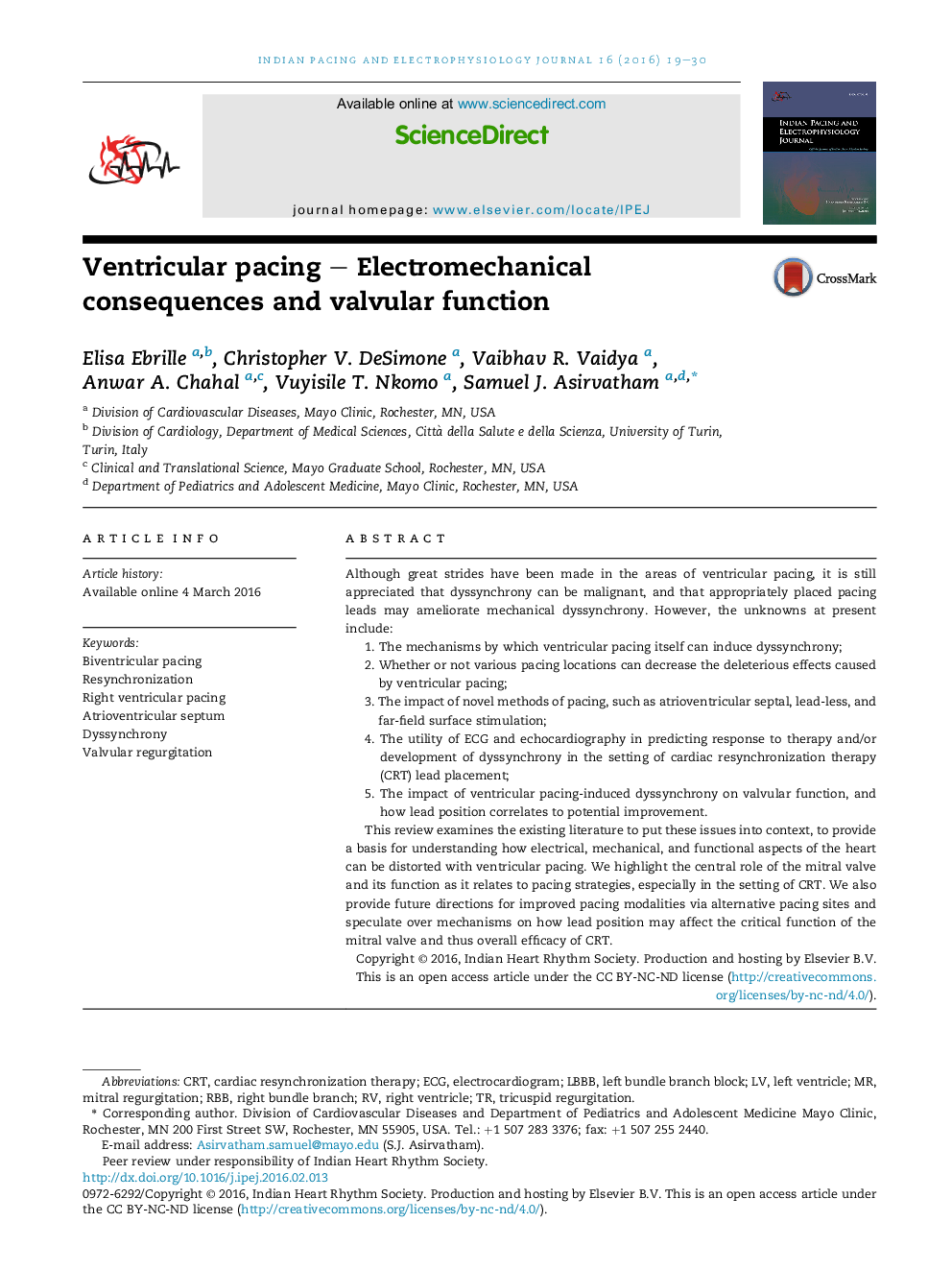| Article ID | Journal | Published Year | Pages | File Type |
|---|---|---|---|---|
| 2928328 | Indian Pacing and Electrophysiology Journal | 2016 | 12 Pages |
Although great strides have been made in the areas of ventricular pacing, it is still appreciated that dyssynchrony can be malignant, and that appropriately placed pacing leads may ameliorate mechanical dyssynchrony. However, the unknowns at present include:1. The mechanisms by which ventricular pacing itself can induce dyssynchrony;2. Whether or not various pacing locations can decrease the deleterious effects caused by ventricular pacing;3. The impact of novel methods of pacing, such as atrioventricular septal, lead-less, and far-field surface stimulation;4. The utility of ECG and echocardiography in predicting response to therapy and/or development of dyssynchrony in the setting of cardiac resynchronization therapy (CRT) lead placement;5. The impact of ventricular pacing-induced dyssynchrony on valvular function, and how lead position correlates to potential improvement.This review examines the existing literature to put these issues into context, to provide a basis for understanding how electrical, mechanical, and functional aspects of the heart can be distorted with ventricular pacing. We highlight the central role of the mitral valve and its function as it relates to pacing strategies, especially in the setting of CRT. We also provide future directions for improved pacing modalities via alternative pacing sites and speculate over mechanisms on how lead position may affect the critical function of the mitral valve and thus overall efficacy of CRT.
